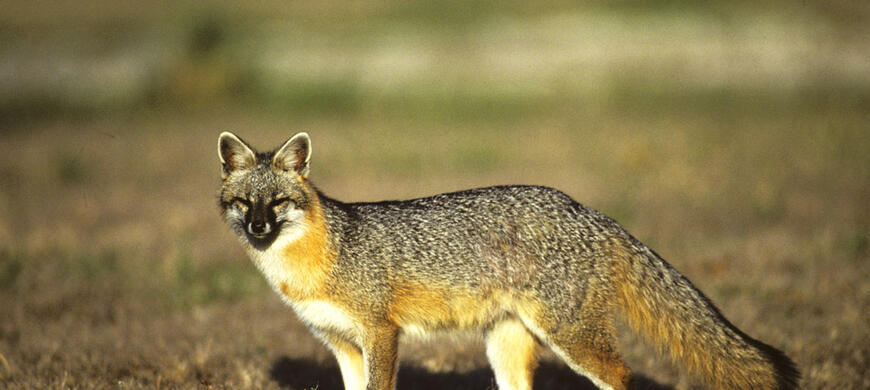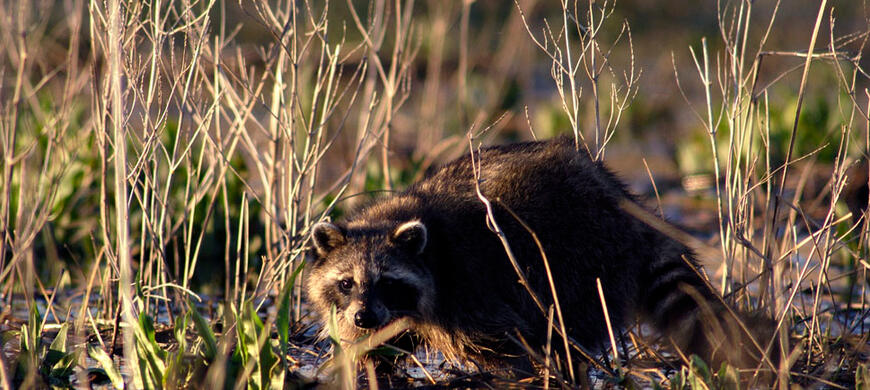Otter

North American river otters once occupied most of North America. During the early 1800s, they were probably common along all the major rivers and permanent streams in Kansas. Over time, otters were reduced to less than 33% of their historic range in the lower 48 states by overharvesting for their fur, habitat loss and water pollution. The last reported otter in Kansas in historical times was trapped near Manhattan in 1904.
Because of their decline and ecological, economic, cultural and aesthetic importance, many wildlife management agencies, including those in the Midwest, initiated reintroduction programs in the 1980’s. Those reintroductions, immigrations from neighboring areas, habitat improvement and stringent harvest regulations helped reestablish river otters across 90% of their historic range. This story is said to be one of the most successful carnivore reintroductions in history.
In Kansas, efforts to restore the river otter began when the Kansas Department of Wildlife and Parks released 19 otters from Minnesota and Idaho into the South Fork of the Cottonwood River in Chase County from 1983 to 1985. That effort was partly successful and was bolstered by otters that immigrated into Kansas from Missouri which released 845 otters between 1982 and 1992. Otters have since expanded their range into all of eastern and parts of central Kansas.
Otters are found in rivers, lakes, ponds and streams in Kansas. Basically, any permanent waterbody that can support beavers may support otters. With webbed toes; a long, flat tail for swimming; a rounded, flattened head and nostrils and ears that can seal tight underwater, they are well-adapted to life in and around the water. They have thick fur and layers of body fat to insulate them in the water. Occasionally, they may be found away from water, particularly during the breeding season or when traveling between bodies of water.
Otters eat mostly fish and crayfish, but they also consume frogs, turtles, shellfish, large insects, birds and small mammals. They have a minimal impact on fish populations in large streams, rivers and lakes, but can have a detrimental impact in small streams and ponds. They have few natural enemies in Kansas with bobcats and coyotes topping the list. They are active year-round, day and night, except around humans, they tend to be more nocturnal.
Otters use dens for giving birth and for shelter during extreme weather. The den sites are well-hidden and include hollow logs, log jams, piles of driftwood and dens and lodges of muskrats and beavers. They may also den under docks, boathouses and other human structures
Breeding occurs from December to April, but the fertilized eggs do not attach to the wall of the uterus and begin developing until about eight months later. This delayed implantation ensures that the pups are born in March through July when conditions are optimal for their survival. Once the eggs implant, gestation takes 61 to 63 days and two to four pups are born. In late fall, the pups leave to establish their own territories and may be spotted on land as they move between bodies of water. The basic social group for river otters is a female and her young. Males are usually solitary except during breeding season, but sometimes congregate in bachelor groups of a few to a dozen or more.
River otters are classed as furbearers in Kansas, and their population has increased in the state to the point where the first modern harvest season for otters was established in 2011. Otters may be legally trapped in Kansas during the prescribed trapping season or with a nuisance wildlife control permit issued by the department. They are listed on Appendix II of the Convention on International Trade in Endangered Species of Wild Fauna and Flora (CITES), meaning they may be confused with endangered and threatened otter species from other parts of the world. Because of this listing, river otter pelts must be properly tagged after harvest.
Dates: 11/08/2024 - 03/31/2025
Otter Bag Limits and Management Units
NO OPEN TRAPPING OR HUNTING SEASON ON ANY OTHER FURBEARERS
As part of an effort to ensure the best traps are being used in trapping and furbearer management programs, trapping BMPs have been developed. BMPs are documents that identify techniques and traps that effectively address the welfare of trapped animals, while allowing for the efficient, selective, safe, and practical capture of furbearers. They are based on sound scientific studies of trap performance, and have been developed for each furbearer species in Kansas as a set of recommendations to be consulted by trappers and wildlife managers in the trap selection process. BMP’s are developed by the Furbearer Resources Technical Work Group of the International Association of Fish and Wildlife Agencies. For more information, visit http://furbearermanagement.com/ or contact the Emporia KDWP office.
- Laser lights have been added to the list of illuminating devices which may be used for the taking of furbearers treed with the aid of dogs when paired with a .22 or .17 caliber rimfire handgun or rifle.
- The general furbearer open season will be extended by approximately 15 days; the 2022-2023 general furbearer open season will conclude on February 28, 2023.
- The otter season bag limit will be increased from five to 10 otters. On the Lower Neosho and Marais des Cygnes otter management units, the unit bag limit will increase from five to 10 otters. On the Verdigris and Missouri otter management units, the unit bag limit will increase from two to five otters.
With abundant furbearer populations throughout most of Kansas, furharvesting opportunities abound. In fact, furbearers are probably one of our most under-utilized natural resources, and the benefits of their harvest are numerous. Furharvesting during the legal seasons serves as the primary means of furbearer population and damage control. Regulated harvest also provides generally rural participants with fur, meat and income in an environmentally friendly manner. Furharvesting is often considered a recreational pursuit, but as with hunting, "recreation" does not adequately describe the cultural and social importance of furharvesting in the lifestyles of many participants. Perhaps most importantly, furharvesting helps propogate an appreciation and respect for a group of species that are associated by many people only with the problems they sometimes cause.

































